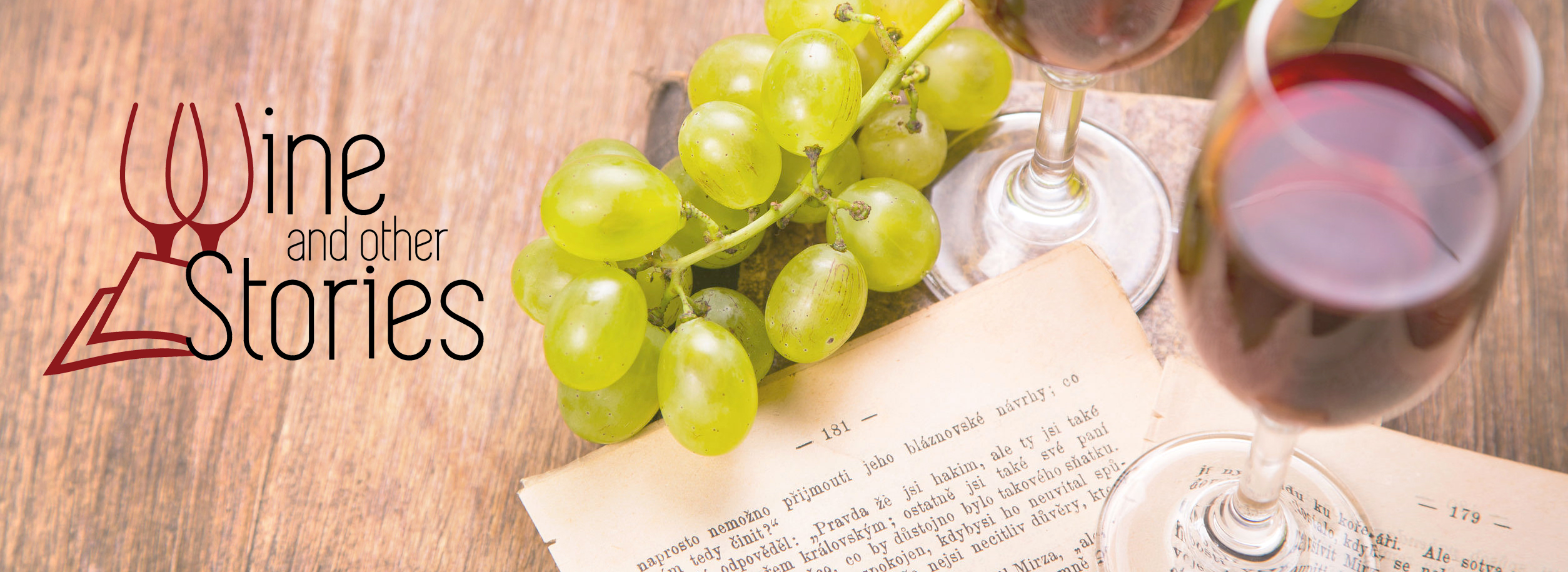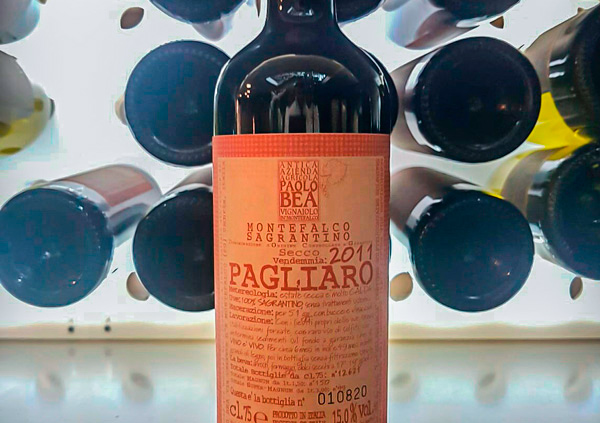A powerful velvety Sagrantino di Montefalco is my wine of the month for June. Made by a true artisan winemaker: Paolo Bea. Here is the wine’s story – and of course tasting notes!
One of the goals of Wine and Other Stories is to share the pleasures of wine with my readers. From now on, I will crown one wonderful specimen as my wine of the month and tell its story. My wine of the month for June is “Pagliaro Secco” Sagrantino di Montefalco by Paolo Bea. I tasted this wine in The Wine Place in South Kensington, London.
Where the wine is from: Umbria
This wine originates from the perfect centre of Italy – Umbria. A completely land-locked area, the Umbria region is dominated by green valleys, fascinating hilltop medieval towns and mountains. The highest peaks in Umbria are the Apennines, a mountain range that cuts across Italy starting from Liguria in the North to Calabria in the South. If you are looking for a quieter and less touristy alternative to Tuscany, but with a similar green heart, Umbria is the destination for you!
The story of this wine begins with two important characters: the town of Montefalco and the mysterious sagrantino grape. We will take a swift glance at both, before delving into the depths of Paolo Bea’s beautiful wine.

Montefalco
Montefalco lays in the heart of Umbria. Walking into town feels like visiting the Middle Ages. Founded in the 12th century, the commune is beautifully preserved and five gates lead into the historical centre. Montefalco is called the “Balcony of Umbria” because of its towering position over the plain below. You can enjoy amazing views from different spots, especially around the central piazza.
Sagrantino di Montefalco
The vineyards around Montefalco are home to the sagrantino grape. Even though Umbria’s wine production is predominantly white, this powerful black skin grape is a signature of the region. The peculiarity of sagrantino is that it’s not planted anywhere else in the world and its acreage consists of only 500 hectares. In comparison, the Napa Valley vineyard area covers 18,600 hectares, while Bordeaux has 112,000 hectares. In many aspects, sagrantino is an enigmatic grape – even its origins are unclear. The grape has an exceptionally high level of polyphenols and tannins resulting in one of the darkest and most tannic red wines ever.
In 1992, the Sagrantino di Montefalco DOCG appellation was officially recognised. Today the appellation comprises the area of Montefalco and its surrounding communes. By law, the DOCG must contain 100% sagrantino grape. The denomination district sits in a basin surrounded by the Apennines. In spite of the district’s land-locked position, the climate is Mediterranean. The Tiber river, running a couple of kilometres west, mitigates the intense heat of the summer.

Paolo Bea
The Bea family is one of the most noteworthy names in the Sagrantino di Montefalco DOCG area. Theirs has always been a family business. The family controls all the vinification process, from harvest to bottling. No external consultant or oenologist is employed. Paolo Bea leads the business today, helped by his two sons Giuseppe and Giampiero.
Bea’s approach can be described by two words: traditional and non-interventionist. According to his philosophy:
Nature should be observed, heard, understood, not dominated
This means avoiding chemicals and artificial shortcuts both in the vineyards and in the winery, listening to the terroir and respecting natural cycles. The family’s ultimate aim is the uncompromised preservation of their identity. Nevertheless, Bea doesn’t reject modern advancements. He believes a balance should be achieved between environment, technology and science. The latter can help humans, but never replace natural processes.
Curiously enough, only one third of Bea’s estate is devoted to viticulture. However, this is in line with the family’s preference towards an unsung and modest artisanship. The Bea family seems to be more interested in sharing the magic of their terroir rather than becoming rich.
Last, but not least, here is my complete tasting notes of the “Pagliaro Secco” Sagrantino di Montefalco DOCG by Paolo Bea. Enjoy!

Paolo Bea - Pagliaro Secco Sagrantino di Montefalco, 2010

 Country: Italy
Region/appellation: Umbria - Sagrantino di Montefalco GOCG
Wine style: Dry red - Bold and Structured
Grape(s): Sagrantino
Average price: £72
Country: Italy
Region/appellation: Umbria - Sagrantino di Montefalco GOCG
Wine style: Dry red - Bold and Structured
Grape(s): Sagrantino
Average price: £72
The archives of Montefalco document the presence of the Bea family in the area as early as 1500. Paolo founded the estate in the 1980s, when he started to produce wine. He runs the family business, helped by his two sons Giuseppe and Giampiero. Today the domain consists of 15 hectares. The estate is really a typical Italian fattoria (farm): the Bea use only one third of their land to produce wine. In the remainder, they grow fruit and vegetables (including olives) and raise farm animals.
This Sagrantino di Montefalco is sourced from the Pagliaro vineyard, which has an altitude of 400 metres. The wine is aged for one year in stainless steel, two years in Slavonian casks and one more year in bottle – before finally being released. Essentially, the wine is not put on the market before its 4th year after harvest. The sagrantino, like all Bea’s wines, is unfiltered.
Tasting notes
(tasted on: 02-Jun-2019)
The wine appears an intense ruby, inky and dark as the night. On the nose, it’s broody, deep, with intensely concentrated and ripe flavours. Brambly black fruit forms the cornerstone of the wine’s aromas with the presence of blackcurrant, cassis and black raspberry. Hints of resinated fruit are also present. In particular, black figs, dark sultanas, prunes. The profound fruitiness is coated by layers of fragrant spiciness such as liquorice, black currant leaves, black tea and dried Mediterranean shrubs. Oak is beautifully integrated, showing as harmonious nuances of cedar box, smoked wood and cloves. Hints of meat, earth and tobacco suggest an early stage of evolution. A very complex nose, intense, focused, concentrated.
On the palate, the wine is really full in body, extremely dense with a mouth coating texture that diffuses the intense flavours poignantly in your mouth. The black fruit aromas are at the wine’s core, mostly bramble and resinated fruit. Suggestions of tobacco, liquorice, earth, undergrowth, meat, dried herbs add more complexity. A delicate toasty edge ties everything up splendidly. The perfect high acidity balances the full flavours, making this wine precise and focused. The tannins are really high here but are extraordinarily fine-grained and smooth. Pure velvet in your mouth. The flavours linger forever, contributing to a wonderfully long finish. Truly terrific. A king among Sagrantino wines!
Wine and other Stories rating: 9.6/10

